Integrated dishwasher purchasing advice: how to choose the right product
- What You Need to Know
- The built-in dishwasher is one of the most popular household appliances in Germany. In more than two-thirds of households, it is an integral part of the basic kitchen equipment.
- For a newly planned kitchen, a built-in dishwasher that fits seamlessly into the kitchen is the best choice.
- It has been proven that washing dishes with a built-in dishwasher uses significantly less water than washing dishes by hand.
- Most kitchen items today are dishwasher safe. This means that heat damage caused by washing in a dishwasher has become very rare.
What distinguishes a built-in dishwasher?
Everyone knows the situation: the evening with the shared meal with friends and family was nice, but no one feels like washing all the dirty dishes. How good it is when the built-in dishwasher is already waiting for its turn in the kitchen. This is a cleaning machine specifically for crockery, cutlery and cookware, as well as a variety of kitchen utensils.
The dishwasher cleans the dishes by rinsing them with water at high pressure and high temperature, while at the same time a special dish cleaning agent works inside the machine to dissolve food residues. After the rinse cycle, the dirty water is pumped out and another rinse cycle with clear water takes place.

The main feature of a built-in dishwasher is that it is built into existing kitchen furniture, i.e. it is integrated. This distinguishes it from a freestanding or an under-counter dishwasher, which are installed next to or under the worktop without being connected to the kitchen furniture.
The invention of the dishwasher
The dishwasher is now considered to have been invented by Josephine Cochrane, who filed a patent in 1886 for a water-pressure-powered cleaning machine for kitchen utensils. Miele built the first dishwashers in Germany and Europe from 1929. However, it was not until the 1960s that the dishwasher became widespread in our country.
Common types of built-in dishwashers
The built-in dishwasher is now the most frequently purchased dishwasher in Germany. Depending on their individual requirements, consumers resort to different variants of the built-in dishwasher. Common types are:
- The fully integrated built-in dishwasher
- The partially integrated built-in dishwasher
- The built-in dishwasher for single households with a smaller width
The fully integrated built-in dishwasher
This is the “undercover agent” among dishwashers. This is because, after installation in the intended kitchen cabinet, it is fitted with a furniture panel that is visually indistinguishable from the adjacent doors and drawers in the kitchen. This makes the built-in dishwasher virtually invisible. In such models, the operating elements are located on the inside of the flap and are therefore only visible and usable after it has been opened. Functionally, the fully integrated built-in dishwasher offers no significant special features compared to other models.
Pro points
- No interruption of the clearly structured kitchen frontage
- Additional noise insulation thanks to the mounted furniture panel
- Just as powerful as comparable freestanding or semi-integrated models
- Best suited for design purists
Drawbacks
- Sometimes more expensive than other models
- The appliance can only be operated when the flap is open
- Assembly of the cabinet front may be difficult or awkward
- No display, for example of remaining time, possible on the outside of the appliance
The semi-integrated built-in dishwasher
Compared to the fully integrated model, a partially integrated dishwasher is also fitted with a matching furniture panel. However, this ends under the appliance’s control panel, which remains visible and freely accessible at all times. The colour of the control panel can vary. Today, appliances with a stainless steel control panel are particularly popular. However, panels in white, black or brown are also available to match the respective kitchen. Often, the control panel also has a display that shows all the information about the current wash cycle or, when not in use, the time.
Pro points
- Control panel can be used as an additional design element
- The operating elements can be used and the display read at any time.
- No difference in performance to fully integrated models
- Sometimes cheaper than fully integrated dishwashers of the same design
Drawbacks
- Usually somewhat higher noise level than fully integrated models
- No uninterrupted kitchen front possible
- Installation of the front panel often more complicated than with fully integrated built-in dishwashers
- Does not fit unconditionally into every kitchen due to the control panel design.
Single built-in dishwashers with smaller widths
Most fully or semi-integrated built-in dishwashers available on the market have standardised dimensions so that they can be installed in standard, 60-centimetre-wide built-in cupboards. If the kitchen is not large enough for this or you simply do not need that much space in the dishwasher, a single built-in dishwasher is a good solution. These appliances have a reduced width of either 45 or 50 cm. They are designed for single and couple households with a lower volume of dirty dishes, but are otherwise just as efficient as their “big siblings”. Most single models use less water than larger dishwashers. In fully planned kitchen units, however, it is difficult to retrofit a wider appliance if, for example, the volume of dishes increases due to an addition to the family.
Pro points
- Enable automatic dishwashing even in the smallest kitchens
- Often use less water than larger models
- Are available as fully and partially integrated models
- Save space that can be used as storage space
Drawbacks
- Often more expensive to buy than a normal-width model
- If more dishes are collected, one rinse cycle is not enough
- Cannot be integrated into all kitchens
- It is often not possible to install a wider appliance at a later date
Considerations and tips for buying
Once you have decided that your kitchen is to be fitted with a partially or fully integrated built-in dishwasher or an extra narrow appliance, the “agony of choice” really begins. Because there is a wide selection of all variants available on the market from numerous manufacturers. The price ranges for a built-in dishwasher go from about 300 to around 1,500 euros, which does not necessarily make the decision in favour of a particular appliance any easier. In addition to the results of a dishwasher test, the following tips can help you find an appliance that suits your own requirements and needs.
Consider the installation location for the dishwasher
Even before buying, it should be clear where the built-in dishwasher will ultimately be installed. In existing kitchens, the space is usually determined by the old appliance. If the kitchen is being redesigned, the water and electricity connections should not be forgotten. As a rule, it is best to install the appliance in the immediate vicinity of the sink. In this case, the sink’s water connection can be used without any problems and there is no need to run a long, trouble-prone supply and drain hose through half the kitchen. Also important: Before buying, check whether the kitchen manufacturer offers suitable front panels for the appliance at all, or at least whether they can be cut from other, visually suitable panels.
How many dishes should fit in the dishwasher?
This is a very essential question. After all, the dishwasher you choose should ideally clean all the dishes from a meal for the whole family in just one wash cycle. Most 60-centimetre-wide built-in dishwashers are designed for 12 to 14 so-called “Maßgedecke”. Of course, a 50- or even just 45-centimetre-wide appliance will fit far fewer. However, if there is no more space for the dishwasher, a narrower appliance is the best possible compromise between space requirements and capacity.
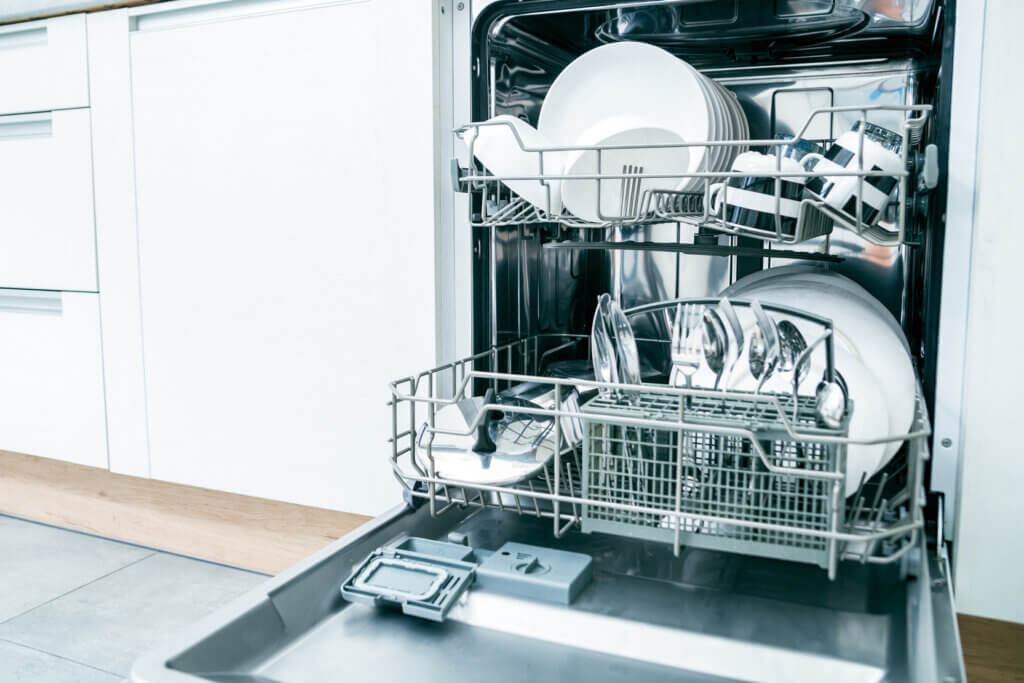
Extra tip: It is worth checking whether a built-in dishwasher is equipped with cutlery drawers, height-adjustable baskets and other additional features. They often make loading and unloading the machine much easier, saving time and effort.
What is a “Maßgedeck”?
It is the central unit of measurement used to indicate the capacity of a dishwasher. The EU standard EN 50242 specifies exactly what a place setting consists of: a soup plate, a dinner plate, a dessert plate, a saucer, a cup, a drinking glass, a fork, a knife, a dinner spoon, a tea spoon and a dessert spoon.
Energy and water consumption
When buying a built-in dishwasher, it is important to consider how much electricity and water the appliance consumes per wash cycle. It is worth comparing several appliances of equal quality in terms of features and technology. This is because some of them differ enormously in terms of water and electricity consumption. If you can estimate how often the machine is used each year, you can easily find out how much money you can actually save with a more economical built-in dishwasher. Information about the environmental compatibility and energy requirements of the appliance is provided both by the energy label and the consumption values given in the description.
Handling, ergonomics and clarity
Anyone who uses a built-in dishwasher almost daily needs an appliance that is easy and intuitive to operate. So before buying, check that all the operating elements are arranged so that they are easy to reach. Partially integrated dishwashers often have an advantage over fully integrated appliances in this respect. One of the reasons for this is that their display informs the user at all times about the set washing programme and its progress. It is also important that the individual programmes are clearly marked and the symbols of the controls are easy to read. This makes it easier to operate the appliance.
Features and functions
The features and functions offered by a built-in dishwasher are usually closely linked to the price of the appliance. Higher-quality and thus more expensive machines usually provide the user with significantly more washing programmes and additional functions. Here it is important to weigh up what is actually needed. However, at least two to three programmes with different rinse temperatures should be available. Then it is possible to react flexibly to different degrees of soiling of the dishes.
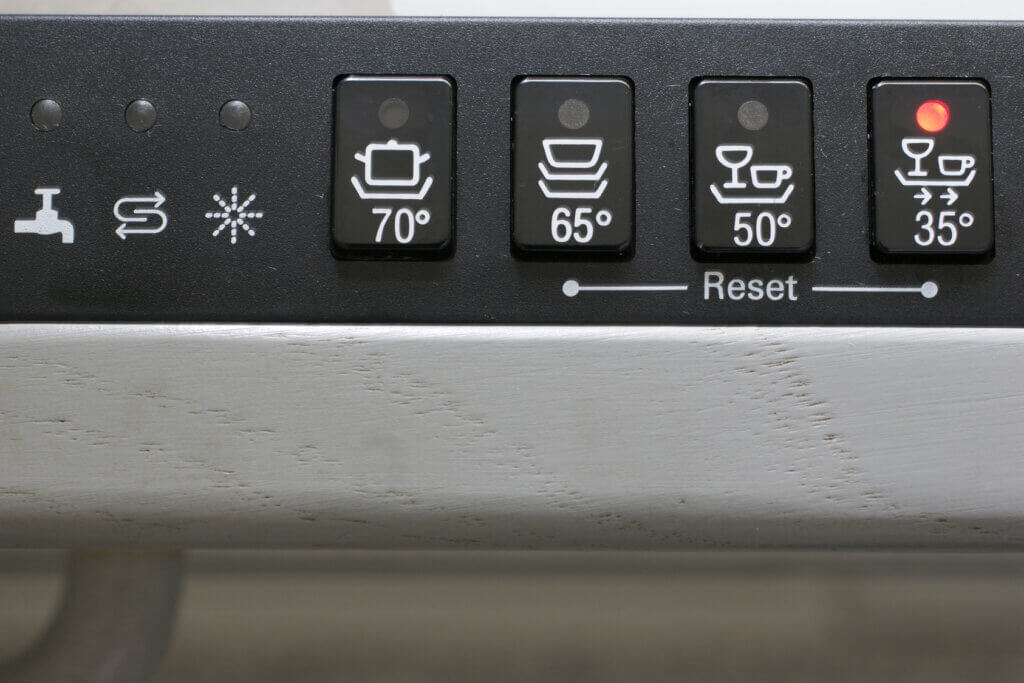
Some appliances also have special programmes for glassware or for half-loads, or offer the option of a start-time preselection. High-quality models in particular often have an energy-saving mode. Consumers should therefore decide before buying which functions they absolutely need and which they can safely do without. Less important are, for example, short programmes, gentle programmes and an automatic door opening function. They are usually only used very rarely or are simply unnecessary and only drive up the price of the machine.
Drying efficiency of the built-in dishwasher
Built-in dishwashers sometimes differ significantly in their drying effect. Whereas with high-quality machines the dishes come out of the appliance virtually “dust-dry” at the end of the wash cycle, many inexpensive models, in particular, require almost all parts to be dried again by hand. In this respect, built-in dishwashers with zeolite technology perform best. The mineral reacts with water, absorbing it and releasing heat in the process. This makes it possible to achieve optimal drying results. Of course, this has its price: you should budget at least 600 euros for such an appliance.
Safety of the built-in dishwasher
Water damage due to a leaking dishwasher can be expensive. Especially if the built-in dishwasher is not equipped with protective devices that require either the manufacturer or an insurance company to cover the costs. Therefore, make sure that a dishwasher at least has a so-called aquastop system. All-round water protection is even better. In machines equipped with this system, the valve with the hose usually disappears completely out of sight inside the dishwasher. If there are small children in the household, the built-in dishwasher should also be equipped with a child lock. It prevents the appliance from being opened and switched on unintentionally and can thus prevent serious burns and scalds.

The noise level of the built-in dishwasher
Often neglected when buying a built-in dishwasher is its noise level during operation. At the latest when the appliance is used for the first time, it becomes apparent that it is quite loud. This is not uncommon, especially with low-priced machines. It is therefore well worth comparing the decibel levels of different built-in dishwashers before buying. If possible, the decision should go for a machine with a low value. However, other factors, such as energy consumption or safety, should always be given greater weight.
Tips on use and care
To get the best possible performance out of a built-in dishwasher, it is important to familiarise yourself with all the functions and programmes before putting it into operation. This enables optimal use of the appliance. This in turn results in lower consumption of electricity and water. Reading the appliance manual carefully is therefore an absolute must for every buyer.
Do not overload the built-in dishwasher
This glass still has to go in and this pot too. Anyone who constantly overloads their dishwasher is not doing themselves any favours. Because the cleaning performance always suffers as a result. The fuller the machine, the less water and detergent reach the last corners.
Clean built-in dishwashers regularly and use dishwasher salt
The front of the dishwasher and the controls should only be cleaned with warm soapy water and never with harsh detergents. It is advisable to use a special dishwasher cleaner at least once a month. It removes stubborn dirt and grease deposits, prevents bad odours and thus maintains the machine’s performance. The filter should also be cleaned regularly to ensure that the dirty water runs off unhindered. If you also use dishwasher salt, you will counteract hard water and limescale deposits on your dishes.
Do not overdose detergents
Rinse tabs are always preferable to liquid dishwashing detergent. The latter can easily lead to overdosing. This not only affects the cleaning performance but, in the worst case, damages the machine.
Warning
Never use normal detergent in a built-in dishwasher! This will cause extreme foaming, which can lead to defects in the appliance.

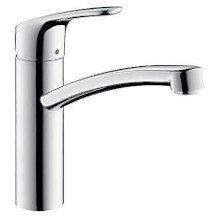
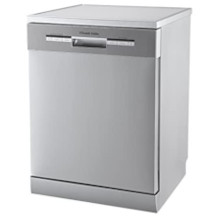
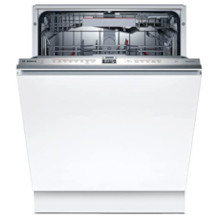
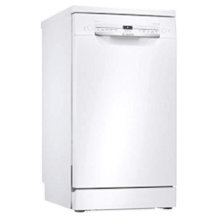
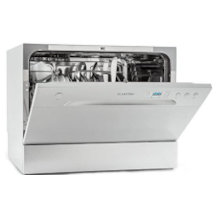
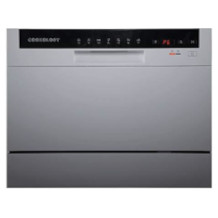



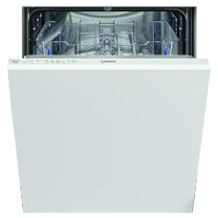
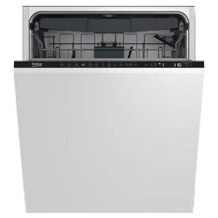

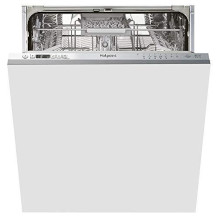





 822 reviews
822 reviews
